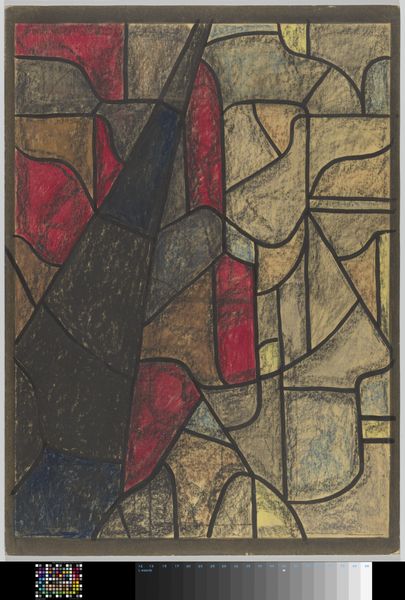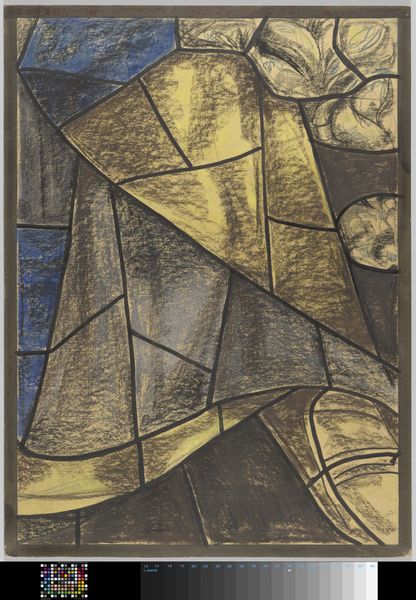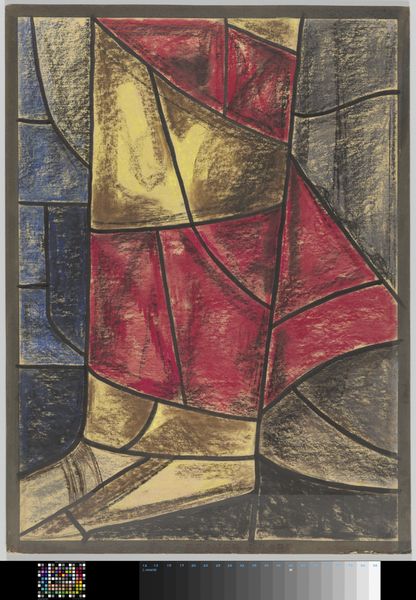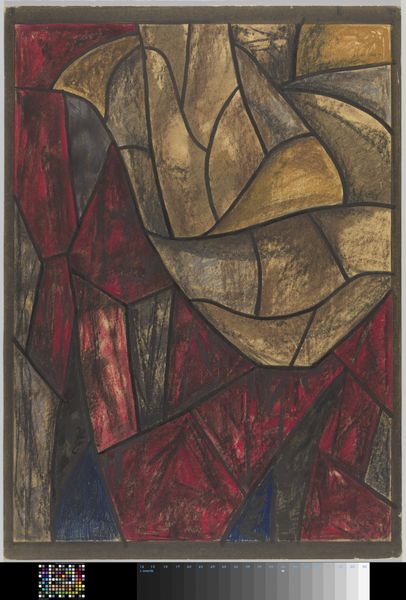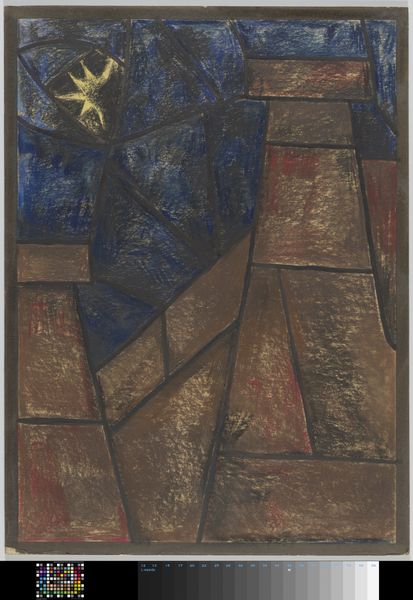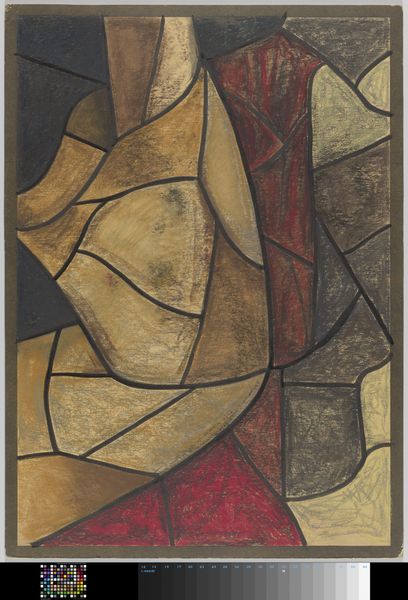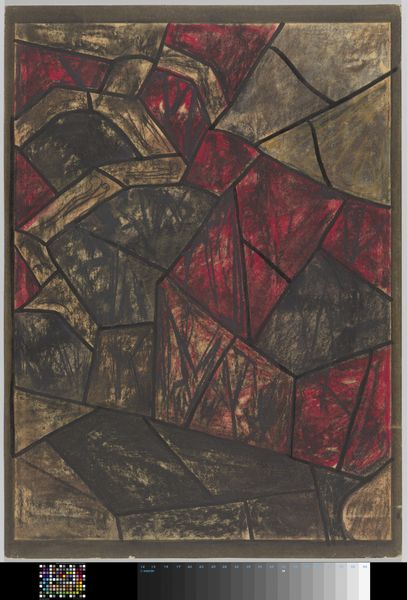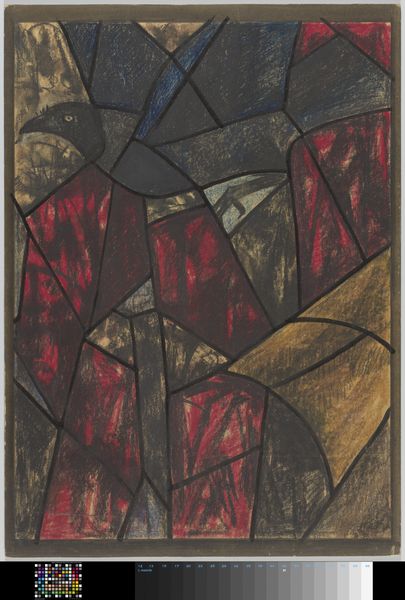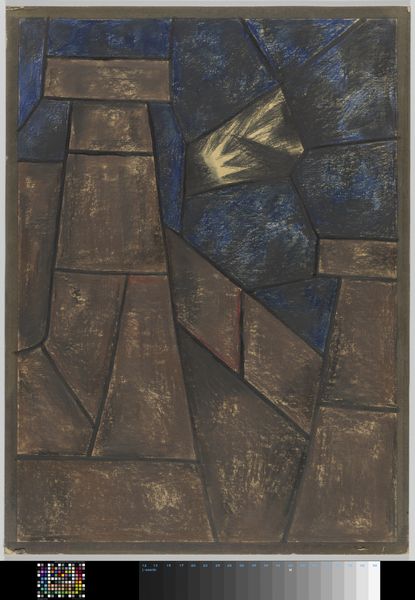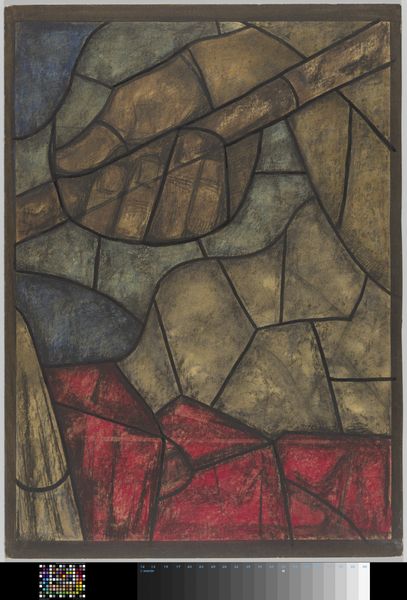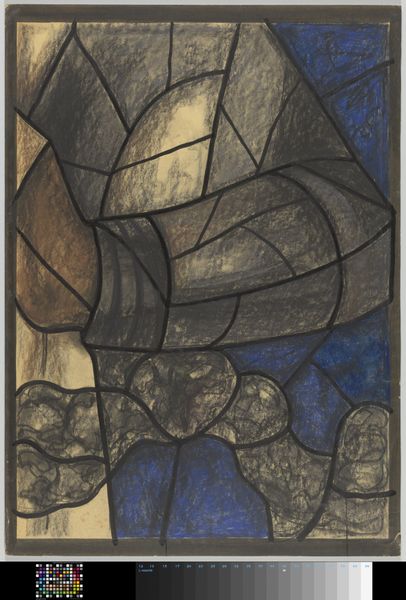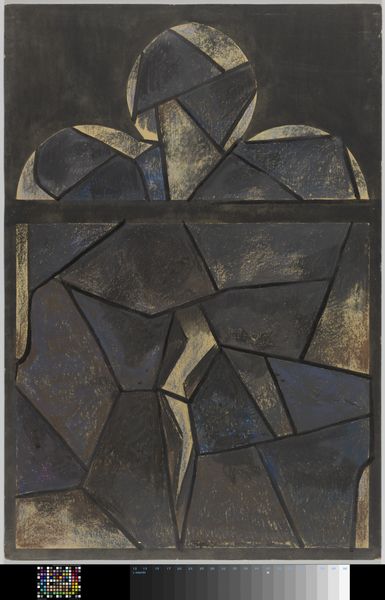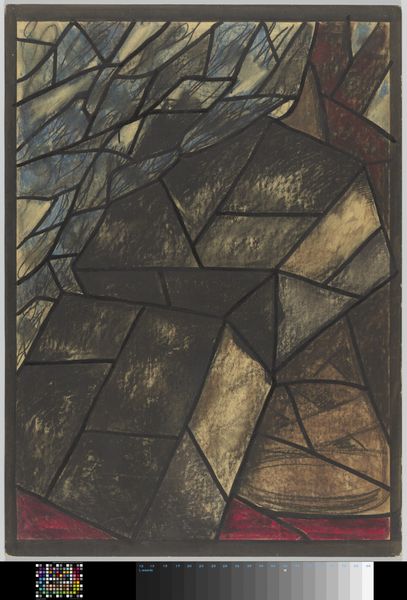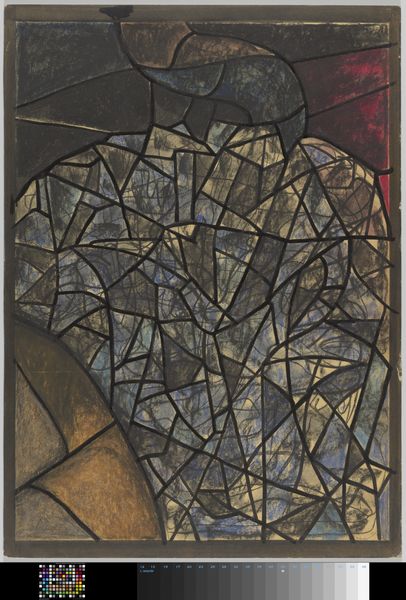
Ontwerp voor raam in het Noordertransept in de Dom te Utrecht c. 1934
0:00
0:00
richardnicolausrolandholst
Rijksmuseum
Dimensions: height 1099 mm, width 811 mm
Copyright: Rijks Museum: Open Domain
Editor: Here we have Richard Nicolaüs Roland Holst's "Ontwerp voor raam in het Noordertransept in de Dom te Utrecht," a mixed-media drawing from around 1934. The geometric shapes and muted colors give it a contemplative mood. I'm particularly interested in the texture achieved through the use of pencil and colored pencil on paper. What stands out to you? Curator: What immediately grabs my attention is how Holst bridges the gap between the "high art" of stained glass window design and the more grounded techniques of drawing and mixed-media. Consider the labor involved in producing a work like this. He isn't simply sketching; he's meticulously planning the fabrication of a large-scale architectural element. Notice how the grid suggests individual panes. What kind of social forces were at play here? Editor: So, you are talking about labor and the planning process. The social forces that stand out would be the relationship between the artist and the church. Curator: Exactly! Who commissions a window for a cathedral in the 1930s, and what kind of message do they hope to convey? This is more than just decoration, it's visual theology translated through specific material processes. Do the chosen materials have a specific value or meaning that reinforces these religious messages? Editor: It's interesting to think about the artist's material choices influencing how religious messaging is translated, by using inexpensive media he perhaps hopes to show that a divine message does not require expensive material to be disseminated. Curator: Precisely! Perhaps, or the inexpensive medium could be related to financial restriction given the historical moment of its production. Examining Roland Holst’s preparatory work, the artistic labor is revealed, challenging a traditional understanding of a stained glass work where material richness is celebrated at the cost of the laborers who extract the precious metals from the mines. What’s your impression now? Editor: I now view Holst's sketch in a new light, the value of his work relies in his choices concerning social forces and inexpensive media that were accessible to the largest number of individuals. It has expanded my thinking! Curator: And hopefully prompts further investigations of artistic labor, material and class.
Comments
No comments
Be the first to comment and join the conversation on the ultimate creative platform.
